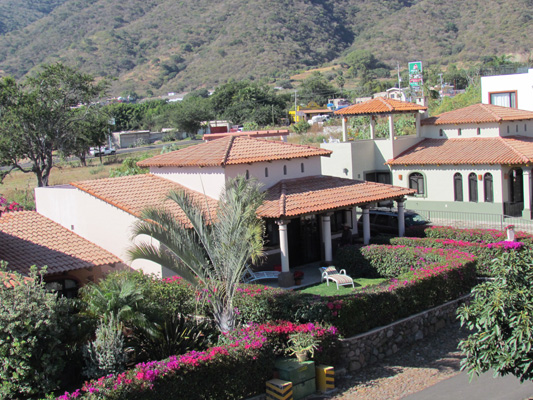

Who would have thought five years ago that we would be calling Ajijic Mexico "home?" But then again who would have thought we were going from a "Home on the Plains," to "My Old Kentucky Home," to the "Land of 10,000 Lakes" and end up in the "Home of the Broncos?" I guess roaming through life prepared us well for Roaming through Retirement. This is a picture of our current villa on the outskirts of Ajijic. It is a two bedroom, two bath, modern kitchen--with all the amenities. Keep us informed by clicking on the email link Larry and Glorine. | ||
|
|
Current temperature and time in Ajijic. | |
|
|
||
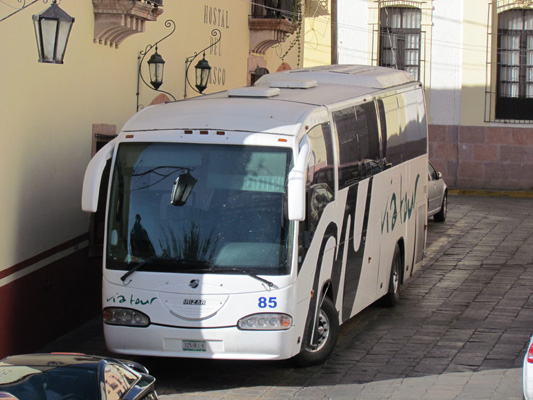 |
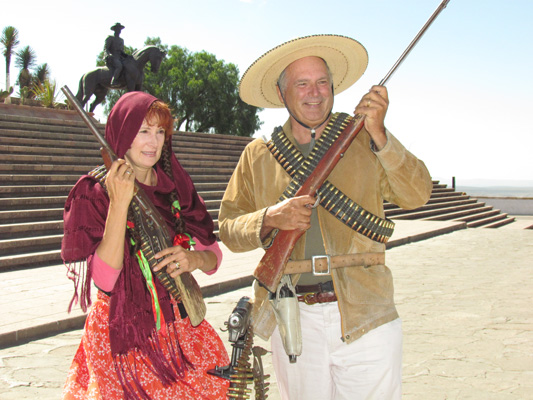 | |
| Four days after arriving in Ajijic, we took a five hour bus trip to the colonial city of Zacatecas in the state of Zacatecas. It was established in 1555 and is a UNESCO World Heritage site, built in the New Spain Era and features elaborately decorated buildings, cobblestone streets, and wrought-iron lanterns. | Our first stop on our tour of Zacatecas was Cerro de la Bufa, which is one of two large hills in the heart of the city and over 8,800 feet above sea level. No, Maureen and Wayne did not join up with the drug cartel, they are posing in the costume of the period when Pancho Villa rode through these parts. | |
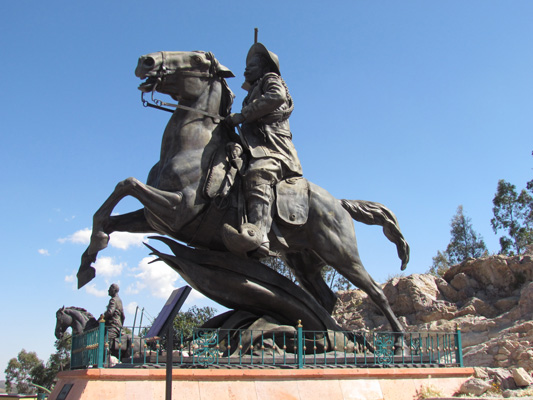 |
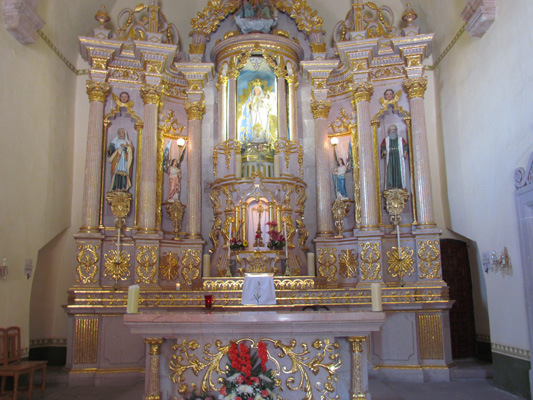 | |
| Here is a statue honoring Francisco (Pancho) Villa. Villa's Robin Hood story began after he established himself and his bandit followers in the Sierra Mountains in the early 1900s through the most important military campaigns of the constitutionalist revolution, in which his troops were victorious from the US border, as far south as and including the Battle of Zacatecas, one of the most decisive battles in the Mexican Revolution. | Also on the Cerro de la Bufa is the Chapel of the Virgin of the Patronage. Built in 1656, this ornate alter has one of three sculptures of the Virgin Mary given by the King of Spain to their new kingdom (Mexico). The other two are in Guadalajara and Guanajuato. The outside of the parish is not much to look at, other than a spectacular view overlooking the city of Zacatecas. | |
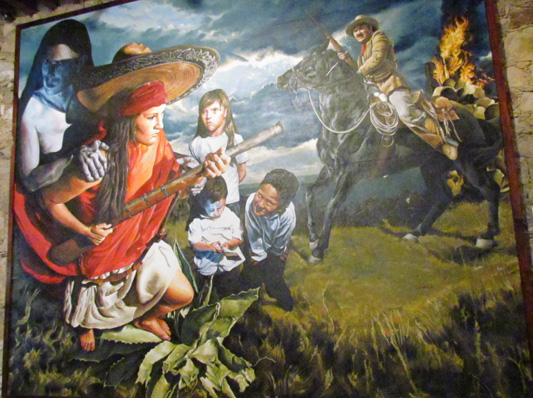 |
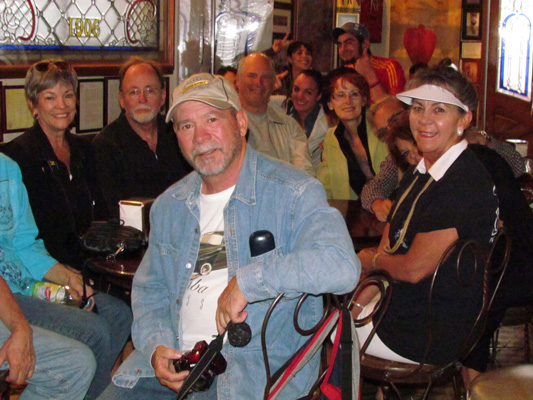 | |
| Lastly, on the top of La Bufa is the Museo de la Toma de Zacatecas (or the Museum of the Capture of Zacatecas). It houses weapons, documents, photos, and other artifacts relating to the decisive battle of the Mexican Revolution, in which Pancho Villa emerged victorious in 1914. The Cerro de la Bufa is one of the most important symbols of the city and was the scene of the Battle of Zacatecas (called the Toma de Zacatecas in Spanish). | After all the sightseeing it was time to relax. About a third of those traveling on the bus found this nice pub, established in 1906 called Las Quince Latras (which means 15 letters--count them). A couple of Mexican customers decided to get into the picture also. | |
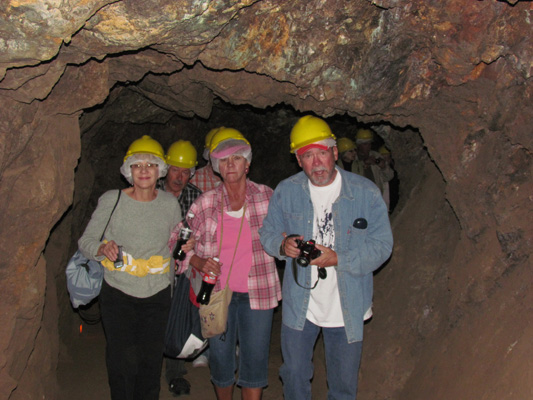 |
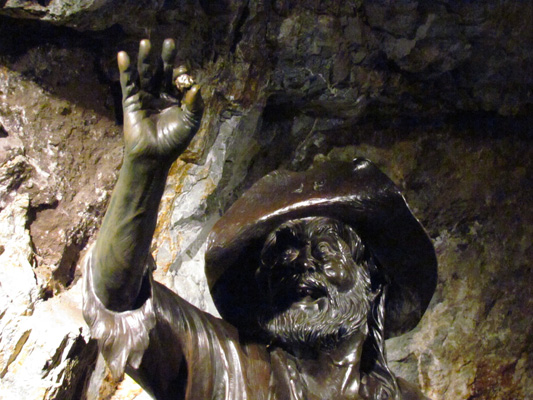 | |
| One of the most important mines from the colonial period is the El Eden mine located in Zacatecas. It began operations in 1586 producing mostly gold and silver and remained opened until 1960. By the end of the 16th century, Zacatecas was the second most important city, after Mexico City, and the income its mines produced for the Spanish Crown made it one of the most powerful in Europe. | The mine reopened in 1975 as a tourist attraction with included several depictions of the mining operation, including this prospector finding "gold!" It was a fun and very interesting adventure. | |
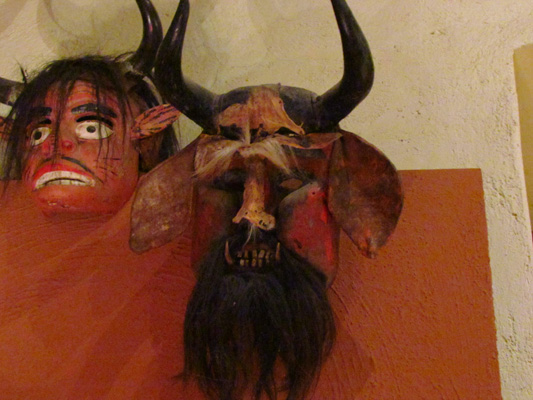 |
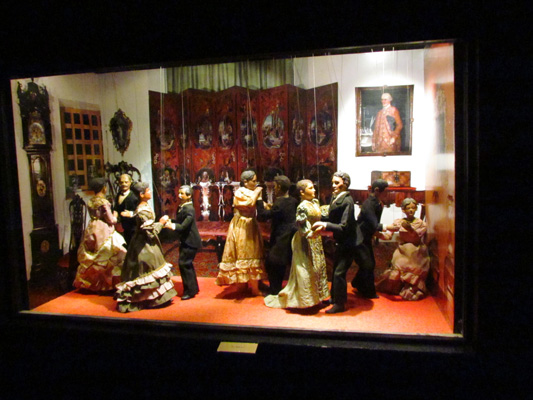 | |
| The Rafael Coronel Museum is unique in that it holds a collection of over 5,000 masks. It is one of the largest mask collections in Mexico, with pieces from throughout the country. | In addition to the enormous collection of masks, they also had displays of puppets. In 1988 the museum was designated as a National Monument. | |
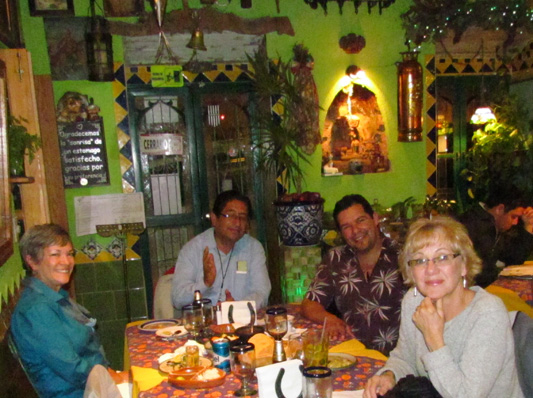 |
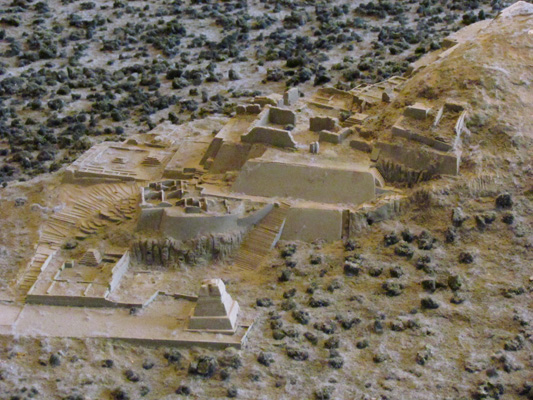 | |
| Another special night on the town. Here we are joined by friends Jerry, Gloria, Donna and Alistair, along with our tour director Noe, and our tour guide, Israel at a restaurant called Pozole. Pozole is traditional pre-Columbian soup or stew from Mexico--hmmm, was it good! | Here is a scale model of La Quemada, one of thousands of ancient ruins in Mexico, central and South America. La Quemada, which in Spanish means "the burnt city." This refers to a massive fire, traces of which were found by early Spanish visitors to the area. The earliest settlements in the area were established around 200-300 AD, with the major occupation and building occurring between 500-900 AD. | |
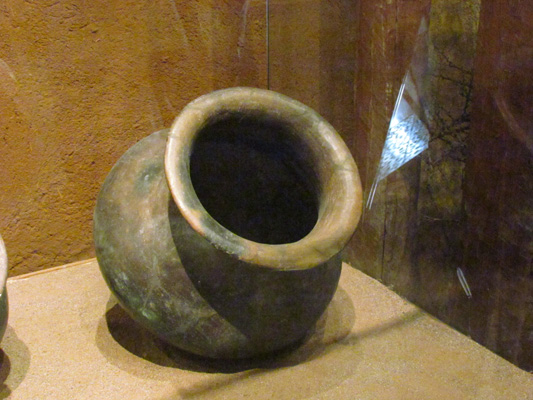 |
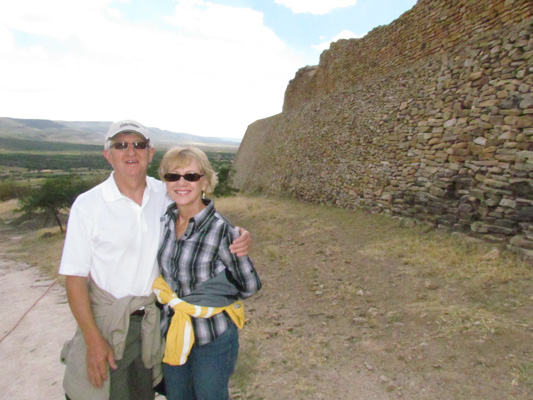 | |
| These massive ruins are the largest pre-Columbian settlement in Zacatecas. This handmade urn, which is on display at the visitor's center dates back to 200 A.D. | La Quemada lies about 25 miles (or 40 minutes) southwest of Zacatecas, Here we are posing next to the main ceremonial complex. It is hard to imagine the massive effort and the highly organized and skilled workforce needed to design and build this complex, with no draft animals, no wheeled vehicles, and no iron tools. | |
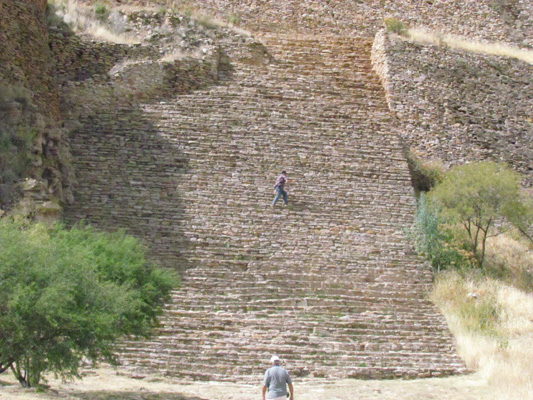 |
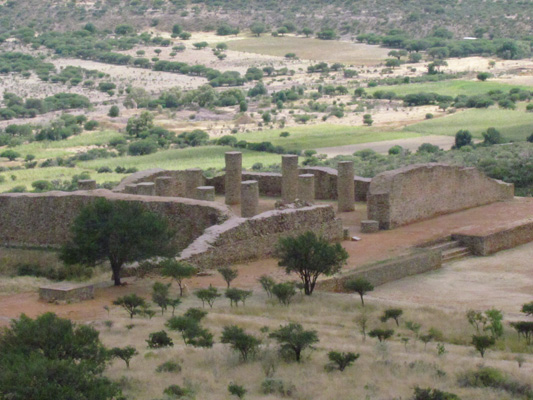 | |
| There are several great staircases in the complex, all impressively built with flat stones. This broad stairway leads to the main ceremonial complex. Here Wayne (bottom) is about to take it on. | This complex is known as the Chamber of Columns, with gigantic pillars, 18 feet in height and 17 feet in circumference that held a massive roof structure. The size of this room would indicate it was used for major religious/ceremonial activities. | |
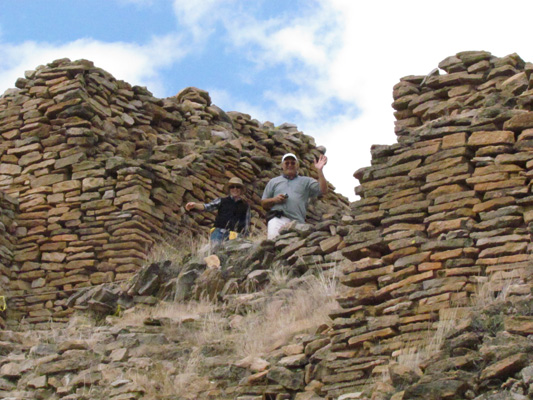 |
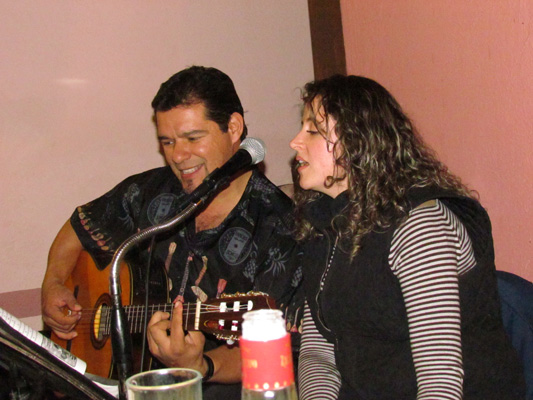 | |
| Here Wayne and Glorine are posing at the top of the largest complex of La Quemada. The tour guide said that the site was abandoned around 1000 AD. | That evening our tour director, Noe, did what he is really good at, playing the guitar and singing 60s and 70s music, along with lots of Mexican salsa. The young lady is a friend of Noe, but has quite the voice herself. | |
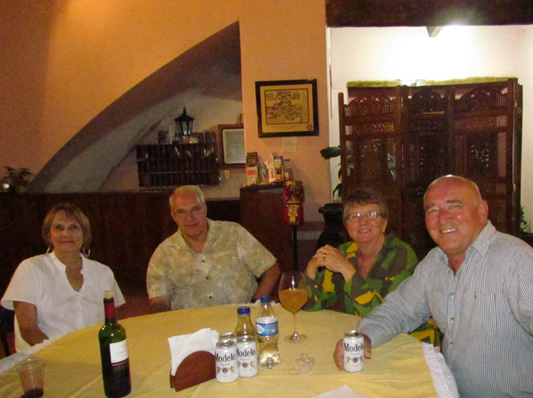 |
 | |
| Here are just a few of the people on the tour settling in for an evening of music, dancing and merriment. | After a bit of encouragement, Glorine did a 15 second table dance--for free! | |
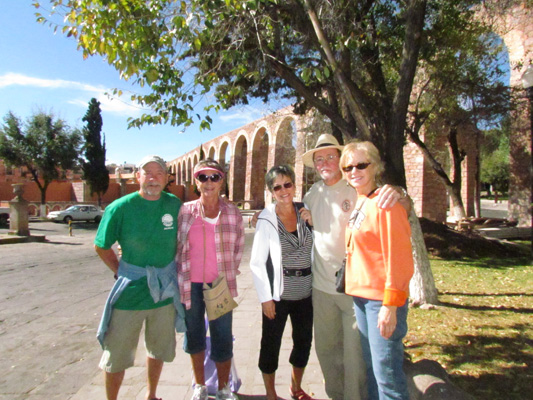 |
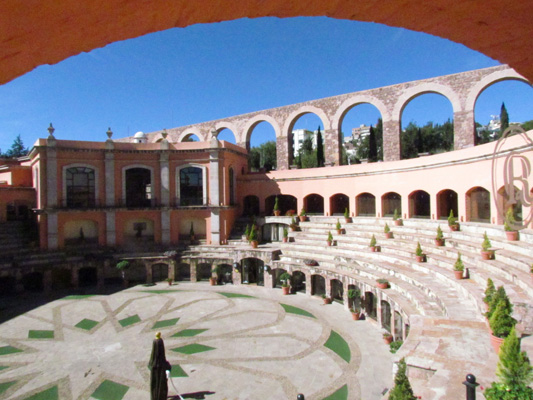 | |
| The morning before the long drive back to Ajijic, several of us took a walking tour of the historic center of Zacatecas. Here we are posing in front of an Aqueduct that is no longer in commission. | Here is an old bull fighting ring turned into an upscale hotel and restaurant with the Aqueduct in the background. | |
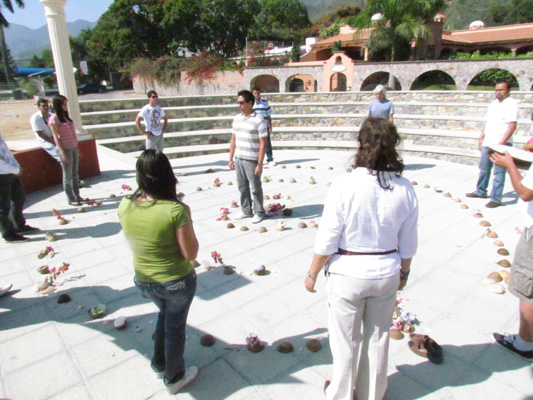 |
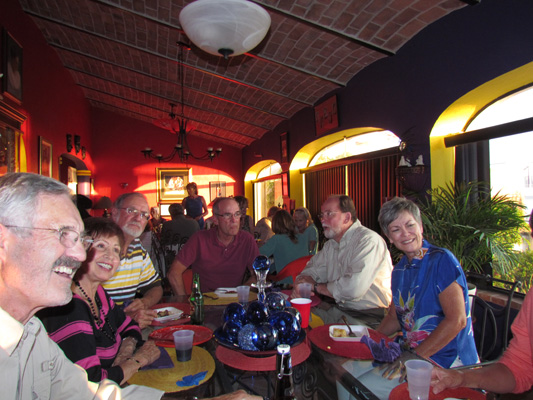 | |
| Back in Ajijic, on 11/11/11, a Labyrinth was laid out at an outdoor concert area on the Malecon for people to walk to the center, say a prayer or a moment of silence and back out of the maze. | We were invited to celebrate Thanksgiving with about 50 other people, most of whom we knew. The food, weather and companionship could not have been better. | |
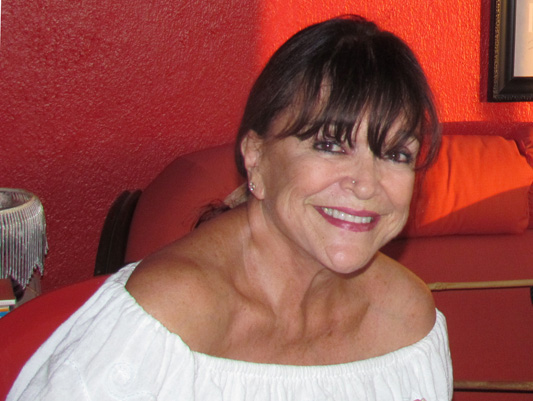 |
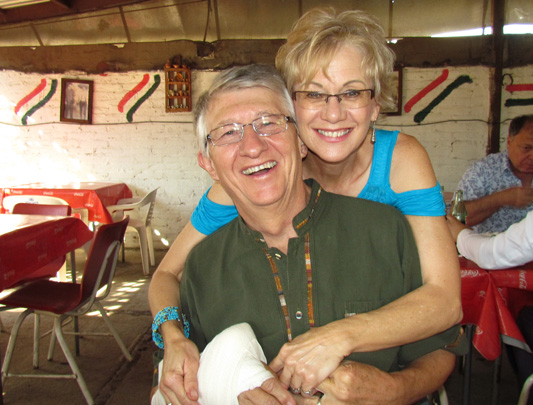 | |
| And here is Lil, our Thanksgiving host, who along with her shipmate Norm, opened their lovely home to nearly 50 people to share this special occasion together. | One of the regular spots we hit at least a couple times each year in Mexico, is Raul's, where meat is place on large skewers in a big fire pit. We were with a bunch of friends, one of whom caught this shot. Broken arm and all, it was another great outing. | |
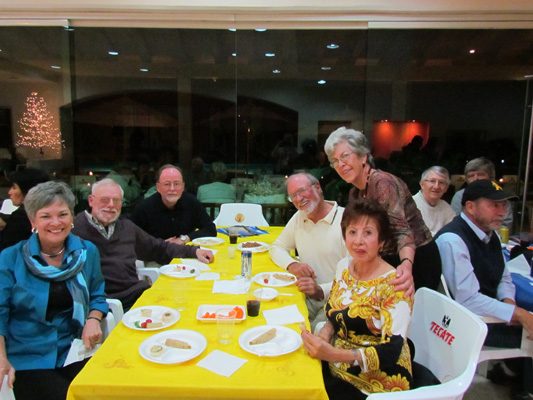 |
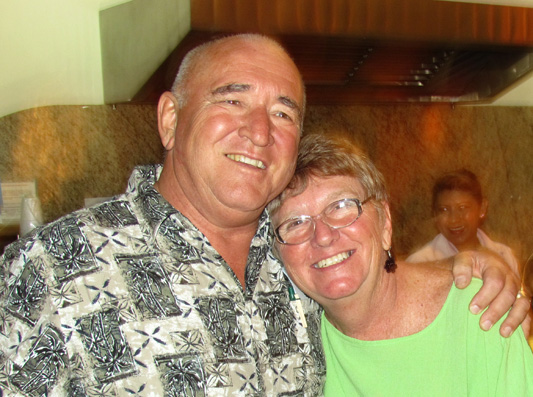 | |
| Fundraisers, like this one, are a great way to raise money for charity and have fun at the same time. Noe, our Zacatecas tour director, played along with his dad on sax and Paco, a great guitarist. It seemed like we were at a concert--the music was just that good. | Here are a couple of new friends we met on the bus tour to Zacatecas, Ross and Carol. They helped organize the fundraiser for an orphanage called "Love in Action. They, along with Maureen and Wayne are volunteers at the orphanage. | |
November's web page includes November 1 through November 30.